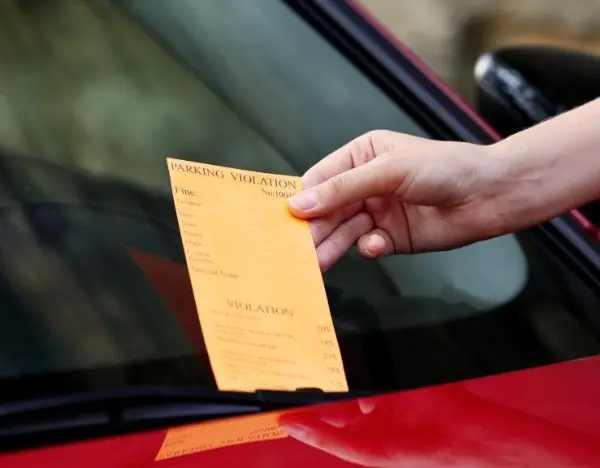Premier legal representation for parking and moving violations
New York’s Point System Just Got a Major Overhaul

At The Law Office of Mindy Paget Brill, we’ve spent decades defending New York drivers and staying ahead of traffic law changes. But in all that time, we’ve never seen the Department of Motor Vehicles roll out changes quite like this. Effective November 6, 2024, the DMV has significantly altered its point system and the consequences tied to traffic violations, impacting how points are calculated, increasing the penalties for certain offenses, and making it harder for drivers to regain their license after certain convictions.
While the DMV claims these changes are designed to improve safety and remove reckless drivers from the road, it’s difficult to ignore the financial windfall these rules will bring to the state. Below is a breakdown of what’s changing and how it could affect you.
These Rules Are Technically Statewide… But Not in NYC (Yet)

Let’s start with the messy rollout. Although the new rules are already in effect across most of New York State, the Traffic Violations Bureau (TVB)—which handles NYC traffic tickets—can’t implement them yet. That’s because their outdated software won’t be updated until sometime in 2025. So, for now, if you get a ticket in New York City, the old rules may still apply (unless DMV plans to update everything manually after the fact, which is anyone’s guess). Outside NYC, however, the new system is already being enforced.
The DMV’s New Look-Back Period: From 18 to 24 Months
One of the biggest changes is how long traffic violation points will count against you. Under the old rules, points “aged out” after 18 months from the date of the offense. Now, they linger for 24 months—meaning you have a longer window during which points can stack up and lead to suspension.
Even with this extended timeframe, the 10-point suspension threshold still applies for most drivers. But with points hanging around longer, it’s easier to hit that limit. The result? More suspensions and more drivers forced to pay the DMV’s Driver Responsibility Assessment Fee (DRAF), which kicks in once you accumulate 6 or more points within 18 months.
It’s worth noting that the DMV’s Defensive Driving Program still only helps reduce up to 4 points for violations within the last 18 months—not 24. Similarly, DRAF assessments still use the 18-month rule for now.
Violations That Used to Carry Zero Points Now Carry a Lot
Some of the most drastic updates involve violations that previously didn’t add points to your license at all.
- DWI, DWAI, Aggravated DWI, and DWAI-Drugs (VTL § 1192): Now carry 11 points—on top of already serious criminal penalties.
- Aggravated Unlicensed Operation (AUO): Also now carries 11 points. AUO occurs when someone drives knowing—or being presumed to know—that their license is suspended. This includes people who never got the notice due to an outdated address.
Under the new rules, even first-time offenders may now be hit with a $675 DRAF. While DMV carves out an exception that these 11 points won’t count toward suspension for first offenses, the DRAF still applies. It’s unclear whether that’s a once-in-a-lifetime grace period or something more generous (but don’t count on the latter).
The DMV also introduced vague language allowing 11 points to be imposed for any incident of driving during a suspension—even if the ticket isn’t for AUO. That could mean drivers hit with a basic red light violation while suspended might get 3 points for the red light + 11 points for driving while suspended. Time will tell how aggressively this gets enforced.
Other Zero-Point Offenses Now Carry Points Too
- Facilitating AUO (VTL § 511-a): Now 5 points (used to be zero).
- Speed Contests/Racing (VTL § 1182): Now 5 points. This is also a misdemeanor offense.
- Overheight Vehicle Violations (VTL § 385): Truck drivers beware—if your vehicle hits a bridge or structure due to height, it’s now 8 points + $450 DRAF.
Again, these apply only to offenses occurring after November 6, 2024. Prior offenses still fall under the old rules.
Certain Point Violations Now Carry More Points
- Passing a Stopped School Bus (VTL § 1174): Increased from 5 to 8 points and now triggers a $450 DRAF.
- Speeding in a Work Zone (VTL § 1180(f)): Now 8 points, regardless of how far over the speed limit you were. Oddly, a driver going 45 mph over in a regular zone might get 11 points, while someone going just 5 over in a work zone gets the same 8 points + $450 DRAF.
- Leaving the Scene of a Personal Injury Crash (VTL § 600): Now 5 points, up from 3.
- Failure to Use Due Care (VTL § 1146): Now 5 points, up from 2.
As with the earlier section, these changes only apply to violations occurring on or after the effective date.
Getting Your License Back Just Got Harder
Under the old rules, a driver with 5 or more alcohol or drug-related convictions could be permanently denied re-licensure. Now, that number has dropped to 4 convictions. Fewer strikes and you’re out.
More Administrative Action for Point Accumulation
In addition to longer look-back periods, DMV will now take action earlier and more often:
- 4–6 points in 24 months: You’ll get a warning letter.
- 7–10 points: Mandatory attendance at a Driver Improvement Clinic (though DMV hasn’t clarified what this means or how it differs from existing safety courses).
- 11+ points: You’ll be called to a hearing to determine if you’re a habitual violator. The outcome could be license suspension.
- 9+ speeding points in 24 months: You’re getting a hearing. Previously, you could rack up 10 before DMV stepped in.
- 4+ additional points within 12 months after a hearing: Back to the hot seat you go.
Also troubling is a vague new rule allowing DMV to initiate hearings if you’re charged with three or more point violations in a short timeframe—even before you’re convicted. That’s an alarming new threshold and one we’ll be monitoring closely.
Calculating Your Points Under the New Rules
It’s not as simple as counting up your tickets. With the new 24-month window, you now need to check:
- 24 months before the offense date
- 24 months after the offense date
If either period includes more than 10 points, you’re at risk for suspension. That’s a lot of math—and a good reason to consult an attorney.
Don’t Confuse DMV Points with Insurance Points
Insurance companies use a different formula entirely:
- They calculate points from the conviction date, not the offense date.
- Points can affect your insurance rates for 36 months from the conviction.
Final Thoughts
These DMV changes mark a serious shift in how New York penalizes drivers—and in many cases, how much drivers are going to have to pay. With higher point values, longer calculation windows, and stricter consequences, drivers need to be more vigilant than ever.
If you’ve been ticketed or want help understanding how these new rules might affect your license, contact The Law Office of Mindy Paget Brill. Our consultations are free, and we’re always happy to explain how these new rules might apply to your situation.
Send us an email to get started
Fields marked with an * are required
"*" indicates required fields

Contact the office

30 Wall Street
8th Floor
New York, NY 10005
14 Harwood Court
Suite 415
Scarsdale, NY 10583
Phone: 212-634-2843
Fax: 212-504-3217
© Copyright 2025 The Law Office of Mindy Paget Brill. All rights reserved.
